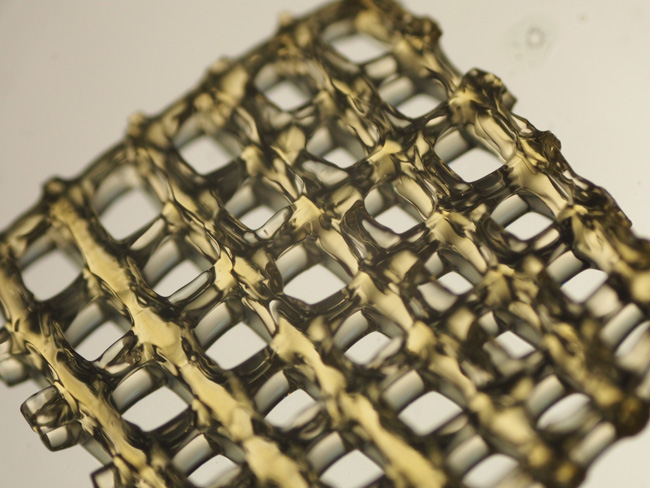 Tuesday 11 December 2018 4:21pm
Tuesday 11 December 2018 4:21pm
Bio-inks are gel-like substances that carry living human or stem cells and degrade over time in the body to help regenerate damaged or diseased tissues.
Researchers have begun accessing the University of Otago invention of a new type of bio-ink for 3D-printing via American company Advanced BioMatrix.
In just its first week on the market the innovative bio-ink has already achieved sales, adding further excitement for the University of Otago team who've brought the cutting-edge technology from concept to reality.
Bio-inks are gel-like substances that carry living human or stem cells and degrade over time in the body to help regenerate damaged or diseased tissues. This unique light-activated gel offers new potential for 3D-bioprinting of living cells to make functional tissue – a development with significant potential in the fields of medicine and science.
“What we've developed is an initiator system that uses visible light such as that from a standard mobile-phone torch to initiate polymerisation reactions,” says Otago inventor Dr Khoon Lim.
“So for example, if we want to print living cells to make tissue, our bio-ink will aid cell survival compared to other polymerisation methods such as UV light or heat.”
Dr Lim is a polymer chemist and member of the Christchurch Regenerative Medicine and Tissue Engineering (CReaTE) Group, which is led by Associate Professor Tim Woodfield. Their new bio-ink is particularly good at increasing cell viability when cells are printed.
Associate Professor Woodfield's team tested their invention using varieties of hydrogels and cells, including stem cells. Cells printed in hydrogels cured with visible light showed new tissue growth, new blood vessel formation and mineralised bone two weeks after printing.
“Currently in the lab, we are photo-crosslinking unmodified Type 1 collagen, silk fibroin and gelatin, using a cell phone torch!” says Advanced BioMatrix' Director of Business Development, Bowman Bagley.
Otago's bio-ink is aiming for clinical applications in the future. CReaTE is part of the Department of Orthopaedic Surgery at the University of Otago Christchurch.
“One day this technology might play its part in the future of orthopaedic surgery. In the interim, we are delighted that our colleagues can soon work with some of our bio-inks in their own research,” says Associate Professor Woodfield.
Advanced BioMatrix's first product related to the invention is the visible light photo-initiator system Ruthenium that researchers can use in conjunction with methacrylated materials such as GelMA.
It was launched recently on 23 October 2018. Otago Innovation licenced access to patent rights and know-how to the Californian company Advanced Biomatrix, who sell high quality and easy-to-use products for 3-Dimensional applications to research customers.
Global bio-ink sales in 2016 were US$70 million, estimated to double by 2021, whilst the young clinical bio-printing market has a forecast value of over US$1 billion.
For more information, contact:
Dr Alex Tickle
Commercialisation Manger
Otago Innovation
University of Otago
Tel 03 479 4145
Email alexandra.tickle@otagoinnovation.com
Mark Hathaway
Senior Communications Adviser
University of Otago
Mob 021 279 5016
Email mark.hathaway@otago.ac.nz
FIND an Otago Expert
Use our Media Expertise Database to find an Otago researcher for media comment.